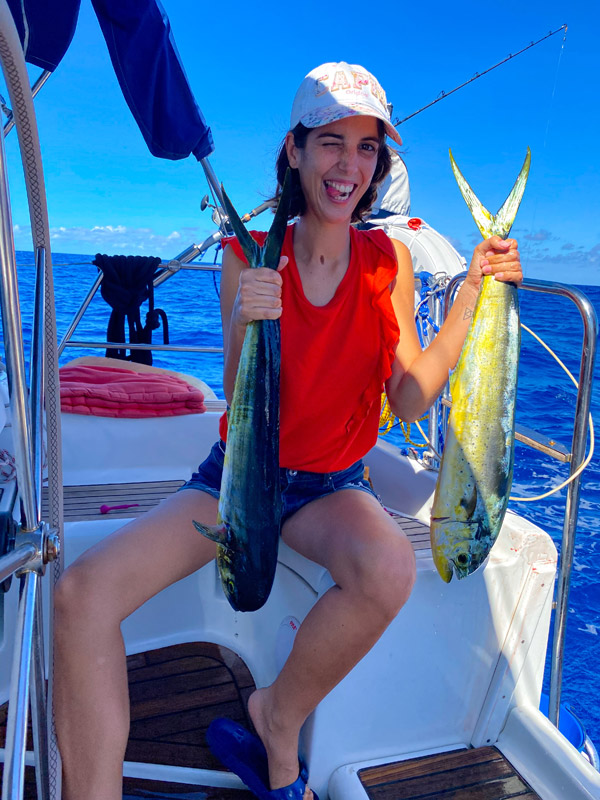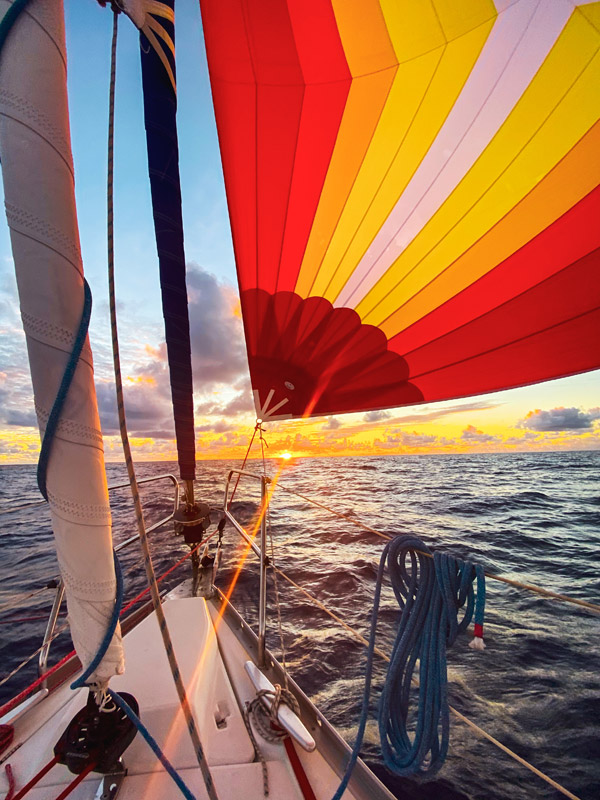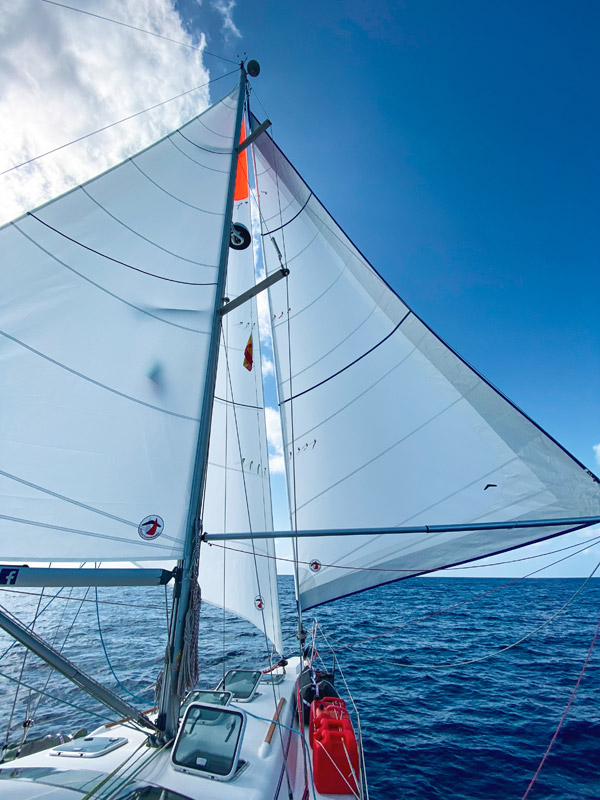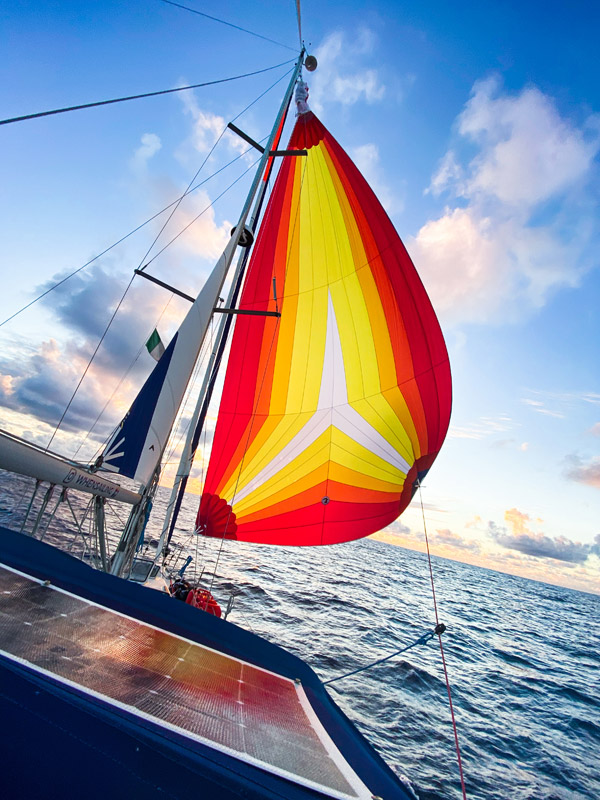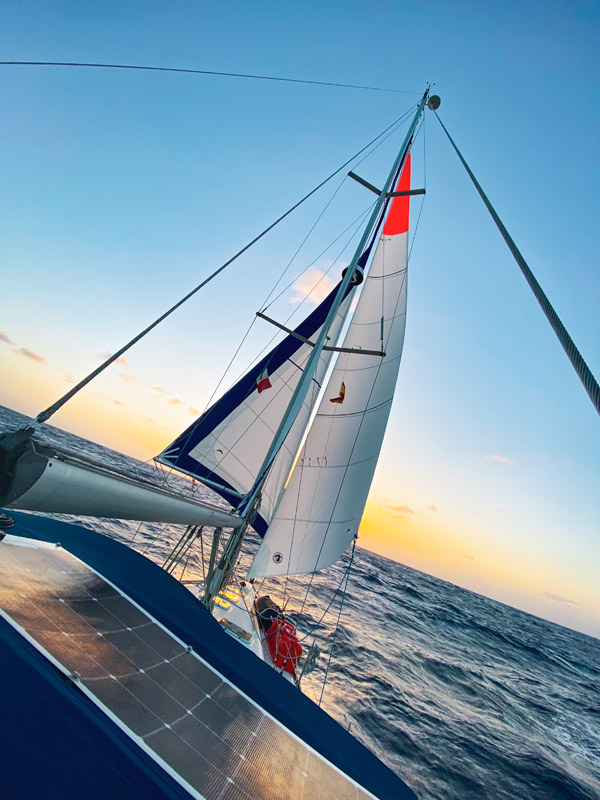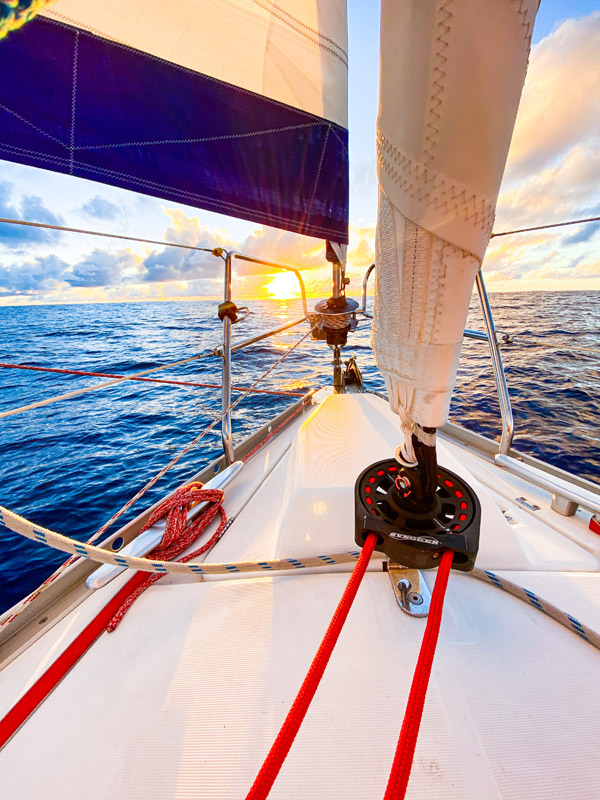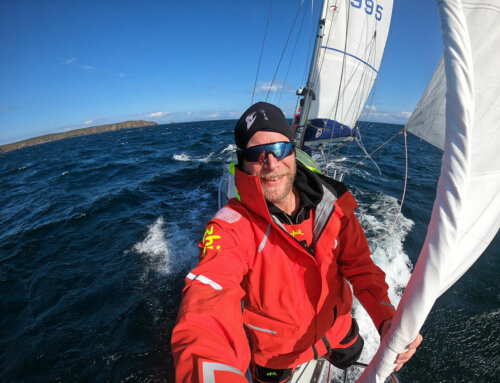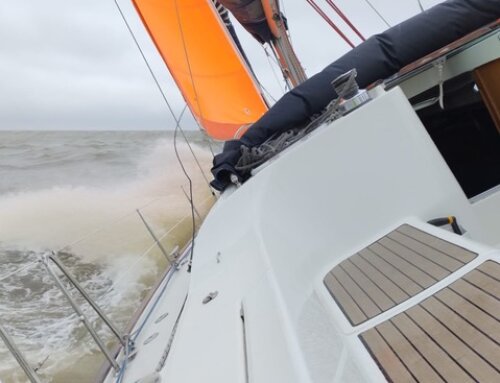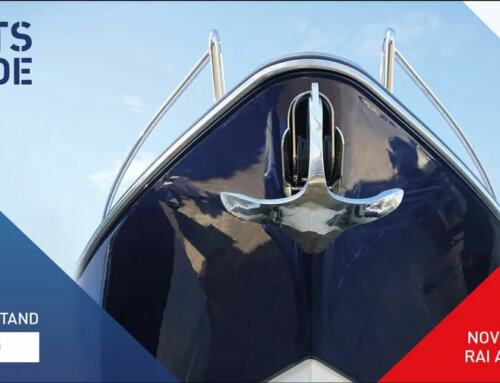2842 Miles from Las Palmas to Martinique. 5,1 knots average, nearly 23,5 days at sea. Winds of up to 36 knots, waves to 5 metres. These are the “statistics” of the Atlantic crossing, a premiere for them, of sailors Greta and Michael on their yacht “ForTuna” who have so far been cruising the Mediterranean. The boat is a Beneteau Oceanis 393, supplied with a new suit of Rolly Tasker Sails for this Atlantic passage to Martinique. So how did it all turn out to be?
How did you feel when you set off?
When we set off we had mixed feelings – we’d never sailed so long distances and as we dropped out of the ARC we were on our own – no other boats around for quite some time so both of us were a bit nervous… but once we set sail after so many days of preparation in the marina, everything settled down and the calmness of the sea, waves and wind kicked in.
And how do you feel now?
Now we feel super grateful and happy – a big project was concluded and we could not have done it without our new sails! We’ve worked the whole year in preparing the boat, learning about weather, safety procedures and how to handle emergencies – after this enormous journey one can really say that the way is the goal!
The crossing was even better than we had expected! We had no casualties, everything and everyone arrived safely and without damage and we could taste the freshest fish we could imagine! (In total we caught 9 mahi mahi, 5 tunas and, nearly, a swordfish).
How was the weather? Mostly classic trade winds or was it changing a lot?
We believe the classic trade winds are slowly changing – also talking with other sailors who did the crossing this year confirms that the stability in wind direction and force is not the same as it has been throughout the last years. On our route from Las Palmas de Gran Canaria to Martinique we had two big wind holes with low winds of 2-5 knots for a few days and the direction changed every few days – luckily, we were equipped with sails for every direction and wind strength so we had to motor only very little throughout the no wind days and could use those for a perfect swim in the biggest pool of the world!
We had days from 3 knots average speed to up to 7,2 knots, saw a lot of shooting stars, bioluminescence and could enjoy nearly a full moon cycle.
Would you do this again?
Michael: Yes, but hopefully across the pacific.
Greta: Let`s discuss that later.
What was your biggest challenge on the crossing?
Facing low winds and the possibility to do nothing against it – motoring was not an option as you have to save the fuel for emergencies but luckily we could make some distance with 3 knots of winds only and our Gennaker – not fast, but still moving. The psychological aspect, how to handle days seeing only blue, without real internet, emails and things we are used to in our daily life was definitely the biggest challenge – for all the other aspects we had the right knowledge and equipment on board.
What was your usual sail set-up (if there was anything like that)?
Due to the many changes in the wind direction, from beam reach to broad reach to downwind we changed the sails a lot. However, we do believe that with a poled-out Genoa alone the whole crossing would have probably lasted twice as long. So, we were very happy with the diverse possibilities offered by our new and complete set of sails: Main, Genoa, staysail and asymmetrical spinnaker.
While we mainly used the poled-out Genoa together with the mainsail and the staysail in the first part of the crossing, once we got acquainted with Winston (our asymmetrical spinnaker) we experimented with that sail and found it much more versatile than we had expected. We sailed Winston in wind angles from 90-160 degrees and it allowed us to still make 5-6 knots boat speed in the low winds we experienced on multiple days.
An asymmetrical Spinnaker really does speed up your Atlantic crossing immensely. Being able to switch between wing on wing and the asymmetrical Spinnaker allowed us to get the most of every wind-wave combination. Moreover, watching our custom designed Gennaker sail into the sunset were some of the most impressive pictures we will keep in our minds for a long time.
Another very interesting aspect that we discovered is the shape of the mainsail – even without battens (we have an in-mast furling system) we could sail it with a perfect twist in the upper part of the sail and were able to adjust it easily.
How easy was it to adapt your sail plan to squalls or sudden changes in the weather?
We could switch very quickly from heavy wind jib (staysail) to storm jib. We prepared the storm jib with all sheets in place in the sail-bag on deck and fixed it near the set-up for the removable inner forestay on Sveggen furler, which is basically done “flying” on a 2:1 purchase system. On the arrival of squalls, we would take the staysail down and the storm jib up – we practised it a few times during the crossing but in the end the squalls we had were too gentle on us with a maximum of 15-20 knots of windspeed…
Did you use the optional staysail and how and when?
Yes, we could use the heavy jib on our new 2:1 halyard system on Sveggen furler very efficiently. The combination of poled-out Genoa and staysail wing on wing, supported by the main on downwind courses worked perfectly and gave us an extra knot or 2 in boat speed. We were amazed by the shape the jib kept even without a second pole plus the flexibility to use it in downwind or on a broad reach together with the Genoa.
Did you experience any specific problems such as, for example, chafe?
Yes, as we used the asymmetrical spinnaker a lot the halyard got bit of chafe where it exited the top of the mast so we changed it. Also, the mainsail halyard knot opened (it was an old sheet) and the single strands went through the knot so the sail slowly glided down to the deck.
Once during the night, we had the asymmetrical up and the tack sheet on the winch – to release it quickly we have the spinnaker sheet only twice around the winch. Around 3 am, the wind suddenly went from 10 to 25 knots, the sheet slipped through and the spinnaker flew on our port side.
But the sock and ring combination is a real gamechanger! Michael was able to pull the asymmetrical spinnaker in by himself while it was flapping on port side without problem, even in the higher winds. When we checked the cloth for damages the next day in the cockpit we were amazed by the quality of the glued and stitched cloth and the thickness of fabric used compared to other sails we have seen – Michael worked for 8 years in the textile industry. As expected no damage was done to “Winston” and we could set the sail again soon after.
What was your self-steering set-up?
For 3 days we had 5-6 metres of waves and up to 36 knots of wind and the autopilot was not able to keep up due to the high energy consumption. We managed to adjust the parameters and fine tune it for lowest sensitivity and rudder gain which worked quite well, but during the day and also during the night we hand steered mostly.
So how did you generate your electrical power?
To our standard solar panels (395 Watts) we added another 200 Watts on the starboard side, as we expected the main panels to be shaded by the sails when heading West. This worked very well but due to the high consumption of the autopilot we had to motor 1 hour a day to make sure no lasting damage was done to our batteries.

